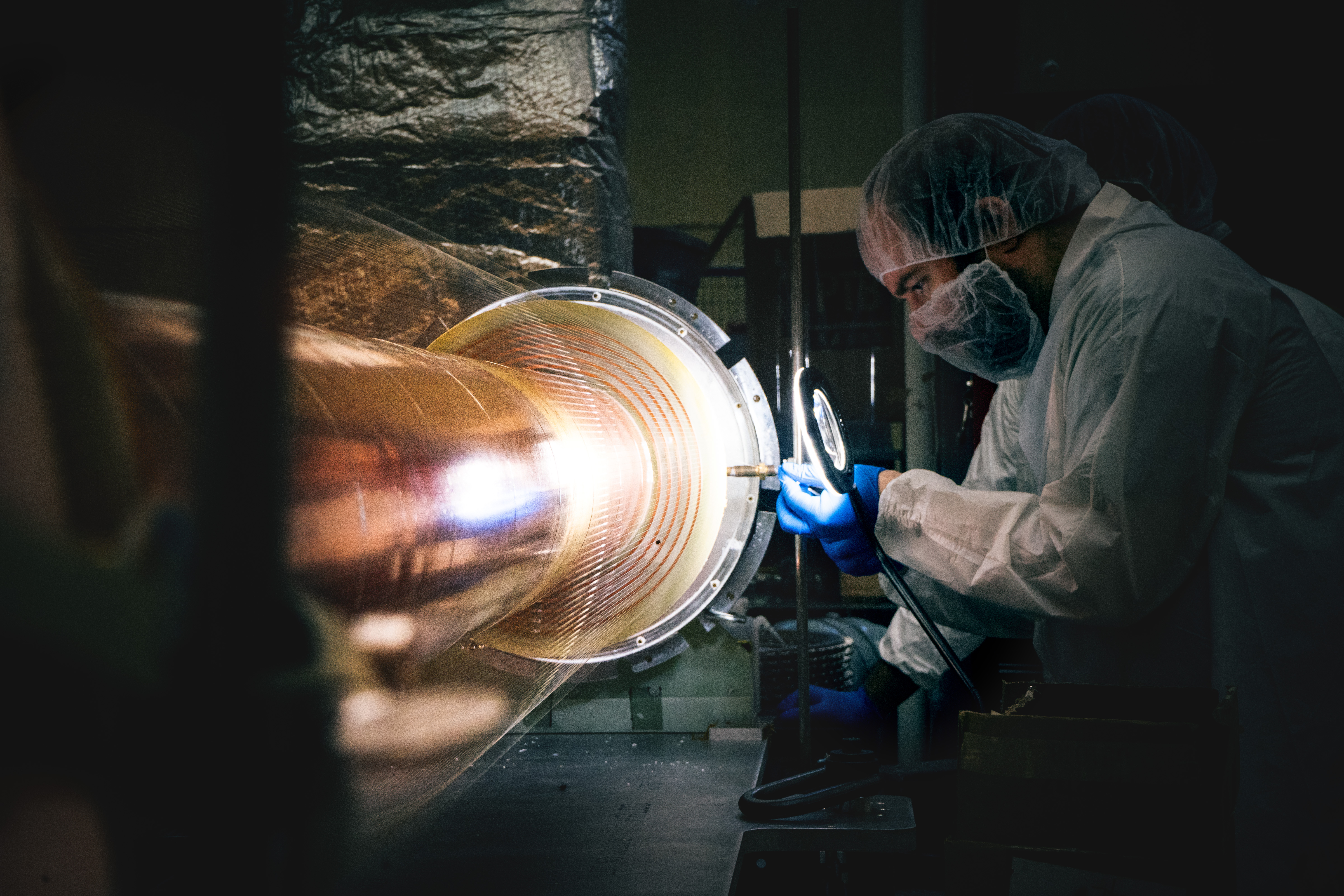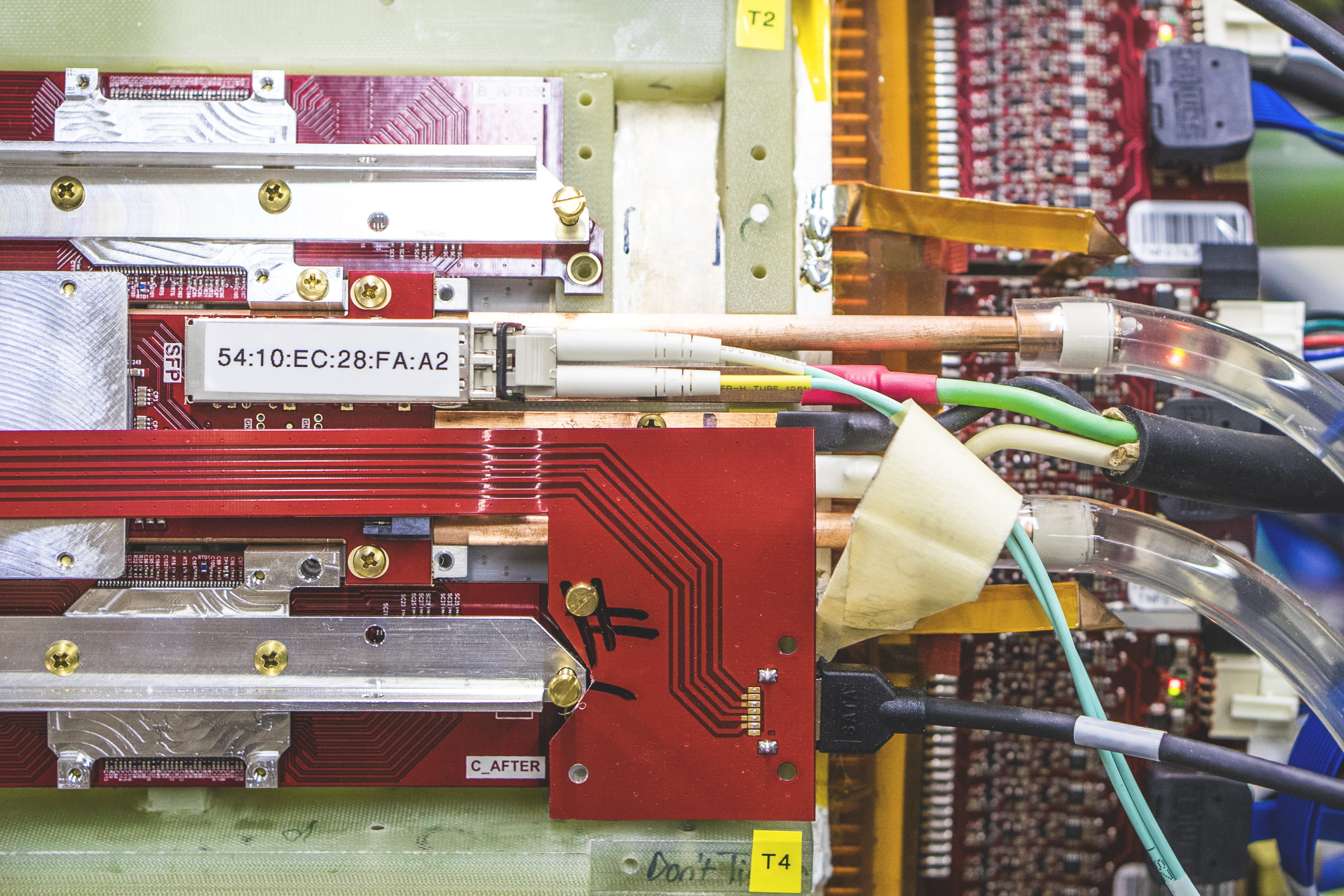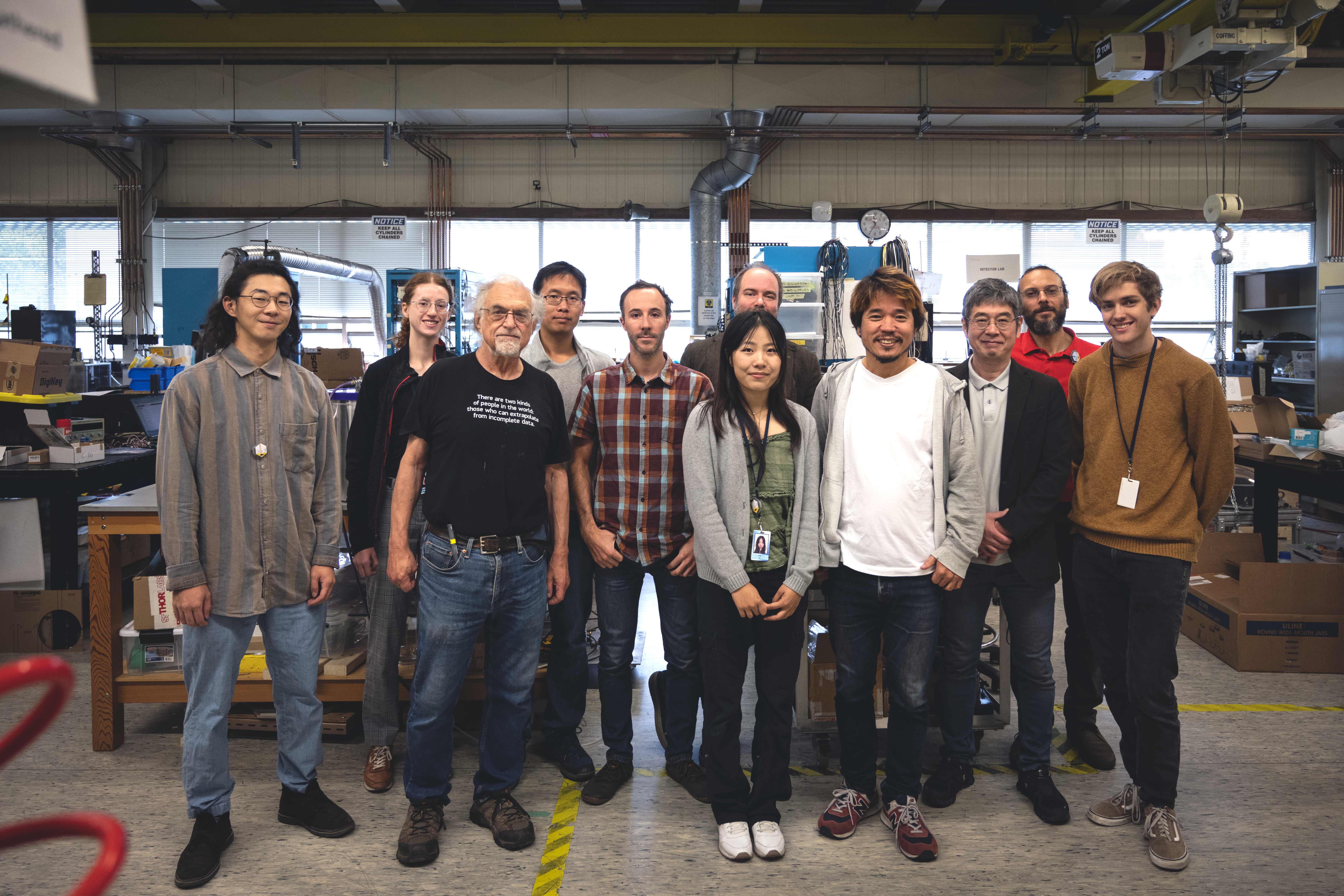 (image: Lars Martin, TRIUMF Support Physicist, making adjustments within the ALPHA-g detector)
(image: Lars Martin, TRIUMF Support Physicist, making adjustments within the ALPHA-g detector)
In the world’s first observation of the effect of the earth’s gravity on antimatter – the obscure counterpart to the ‘normal’ matter that makes up our universe – researchers with the ALPHA collaboration have made an important confirmation: like matter, antimatter does indeed ‘fall downwards’. The collaboration’s findings are published in Nature today.
The Antihydrogen Laser Physics Apparatus (ALPHA) collaboration at CERN, the European Organization for Nuclear Research, completed the first direct measurement of gravity’s effect on the motion of antimatter using its new ALPHA-g apparatus. As expected by much of the scientific community, antimatter falls downwards.
Researchers from TRIUMF, UBC, SFU, BCIT, UCalgary, and York University (ALPHA-Canada) built the ALPHA-g antimatter gravity detector within TRIUMF's detector facilities. The towering vertical detector was shipped and installed at CERN; then after creating and trapping neutral antihydrogen atoms in a magnetic bottle, physicists released the antihydrogen within the apparatus to witness and measure its gravitational behaviour.
 (image: the ALPHA-g detector prototype under construction at TRIUMF)
(image: the ALPHA-g detector prototype under construction at TRIUMF)
Why does it matter?
For physicists, our matter world is quite a conundrum. The theories that describe particles and forces in our universe point to a near-perfect symmetry between matter and antimatter, and that the Big Bang should have created both in equal parts – but our universe is made only of matter. Testing the physics of antimatter with precision may provide a smoking gun as to where all the antimatter went.
Testing the force of gravity is by no means an easy feat, however. Though gravity works at long ranges (think galactic scales!), it is by far the weakest of the four fundamental forces.
“It's been really very difficult to measure any effect directly of gravity acting on antimatter,” said Makoto Fujiwara, TRIUMF Senior Scientist and ALPHA-Canada spokesperson, speaking to CBC National. “Creating and holding and dropping antimatter — and seeing it drop — was really a dream for the physicists in the field for many, many years. So, it's a big deal."
The results mark a critical advancement in ALPHA’s decades-long program of antimatter research, which began with the trapping of antihydrogen for a world-record one thousand seconds in 2011. The collaboration also provided a first glimpse of the antihydrogen spectrum in 2012, set guardrails confining the effect of gravity on antimatter in 2013, and showcased an antimatter counterpart to a key spectroscopic phenomenon in 2020.
For many in the TRIUMF community, the Nature results marked the culmination of years of hard work.
"Working with such a talented and driven group of scientists on the ALPHA-g experiment has been incredible," said Gareth Smith, Graduate Research Assistant and a member of the ALPHA-g team. "We’ve all pushed ourselves and helped each other forward to make this measurement, and for our efforts to be recognized so widely feels truly rewarding. If you’d told me as an undergraduate student that my first publication would be in Nature - and on such an exciting measurement as this - I never would have believed you!"
"Back in 2015, my colleague Joel and I built a vertical magnetic trap simulation model to look into the gravity sensitivity of a practical balanced release experiment," explained Chukman So, Applied Physicist (Quantum Measurements). "That has gradually morphed into an ambitious design with more than 20 superconducting windings, which are required to maximize field - and therefore gravity - precision. At first, it was a hard sell to convince the collaboration. So it's been satisfying to see that, after almost a decade of intense design, construction, commissioning and magnetometry effort, the whole experiment has come together and performed well in this first measurement."
 (image: members of the TRIUMF ALPHA-g team)
(image: members of the TRIUMF ALPHA-g team)
"It's uplifting to be part of this excellent group of researchers, from the youngest students to the scientists with decades of experience in this field, dedicated to understanding the workings of the Universe," said Andrea Capra, Associate Research Scientist on ALPHA-g. "This is the first measurement of its kind and a milestone that allows ALPHA to spring forward into the era of precision gravitational measurements on antimatter."
“This milestone is a culmination of nearly 20 years of dedication and teamwork,” said Fujiwara. “The contributions from the diverse group of members, both from TRIUMF and ALPHA-Canada, were critical to our success. This showcases how—through collaborating with our Canadian partners—TRIUMF infrastructure and expertise can enable crucial Canadian contributions on the international stage.”
With these results in hand, the collaboration is eager to continue precision measurements using the ALPHA-g apparatus.
"The experiment has just begun, and we have only exploited a small fraction of the full trap design," said So. "I look forward to deploying the apparatus fully, and seeing all the efforts we put into it pay off in the ultimate precision we will achieve."
In addition to being published in Nature, the research announcement has been covered by CBC, BBC, the New York Times, and a variety of other outlets.
About ALPHA
ALPHA is an international collaboration based at CERN, which studies antihydrogen atoms, the antimatter counterpart of the simplest atom, hydrogen. By comparisons of hydrogen and antihydrogen, the experiment hopes to understand fundamental symmetries between matter and antimatter.
ALPHA-Canada is a significant group in ALPHA, constituting more than one third of the international collaboration. ALPHA-Canada consists of approximately 20 researchers and students from six Canadian institutions: The University of Calgary, Simon Fraser University, TRIUMF, the University of British Columbia, British Columbia Institute of Technology, and York University. ALPHA-Canada’s research is supported in part by the Natural Sciences and Engineering Research Council of Canada.
This is the first major result from the ALPHA-g apparatus, which was funded through the Canada Foundation for Innovation. Major contributing partners include the Government of Alberta, the British Columbia Knowledge Development Fund, the Ontario Research Fund, Carlsberg Foundation (Denmark), and UK Government funding through the University of Manchester and Swansea University.
